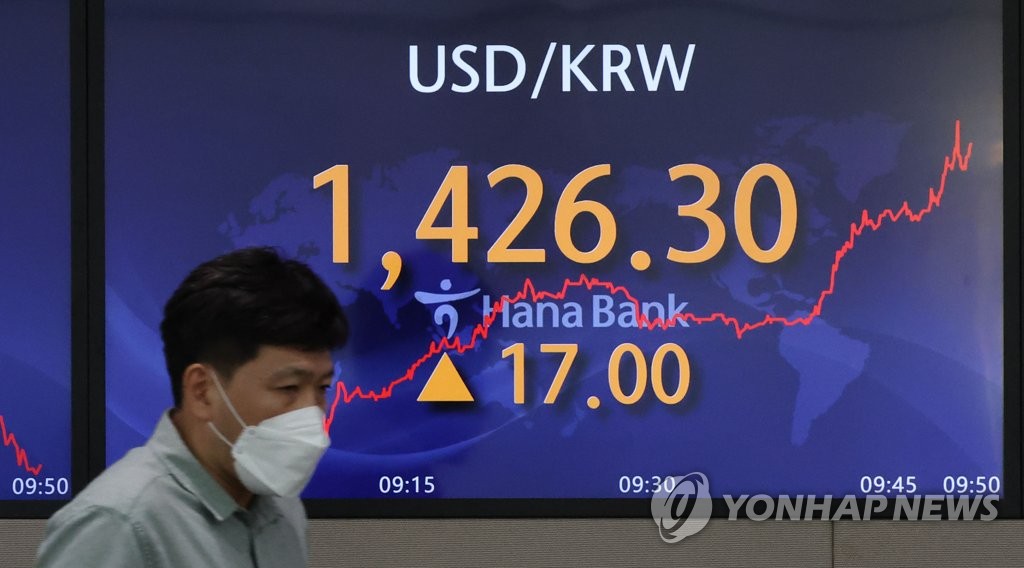The South Korean currency on Monday hit a fresh over 13-year low against the U.S. dollar amid growing concerns that the Federal Reserve’s aggressive monetary tightening could tip the U.S. economy into a recession.
The local currency ended at 1,431.30 won per dollar, down 22 won from the previous session’s close. The won fell to as low as 1,435.40 against the greenback at one point.
It marked the weakest closing since March 16, 2009, when the won ended at 1,440 against the dollar.
The won also slid through the 1,430 mark per dollar during intraday trading for the first time since March 17, 2009, when the won hit 1,436 against the dollar.
Seoul’s stocks suffered heavy selloffs as investors were gripped by fears of a global recession. The KOSPI main index tumbled 69.06 points, or 3.02 percent, to end at 2,220.94, with foreigners dumping a net 5.89 billion won (US$4.11 million) worth of local stocks.
The won’s slide came as the dollar rallied following the Fed’s latest decision to raise its target interest rate by 75 basis points for a third straight time. The Fed hinted at further large rate hikes, including another 75 basis point increase this year.
The Korean currency has fallen at a fast pace in recent months amid global monetary tightening. The won has depreciated around 17 percent against the dollar so far this year.
Korean policymakers said there is no need to be panicked about the won’s sharp weakness, but market sentiment remains fragile and currency volatility has heightened in recent months.
The government is considering using its foreign currency stabilization fund to buy dollar forward deals from local shipbuilders as part of efforts to curb the won’s weakness. It will also encourage the state-run exports bank and commercial banks to meet foreign exchange hedging demand from shipbuilders.
After clinching orders, Korean shipbuilders sell dollar forwards to banks in a bid to hedge foreign exchange risks. Banks then borrow dollars from the foreign exchange swap market and unload dollars in the spot market, putting upward pressure on the won.
Shipbuilders’ currency forward deals with banks are recorded as credit transactions. The latest dollar rally boosted the won conversion value of the money that shipbuilders have to pay to banks later and made it hard for them to unload dollar forwards.
If the government buys currency forwards from local shipbuilders, the move could help them sell dollar forwards, thereby inducing dollar supply and helping ease the won’s downward move. The government aims to encourage shipbuilders to sell dollar forwards worth some $8 billion by year-end.
In the latest move to stabilize the foreign exchange market, the Bank of Korea (BOK) agreed last week to sign a temporary $10 billion currency swap deal with South Korea’s state pension fund, the National Pension Service (NPS).
The deal, expected to be signed next month, will allow the NPS to access the BOK’s foreign reserves to secure dollars rather than from the spot market to fund its overseas investment.
The move is intended to ease dollar demand in the spot market from the NPS expanding its overseas investment, which has been cited as a reason to put downward pressure on the won.


